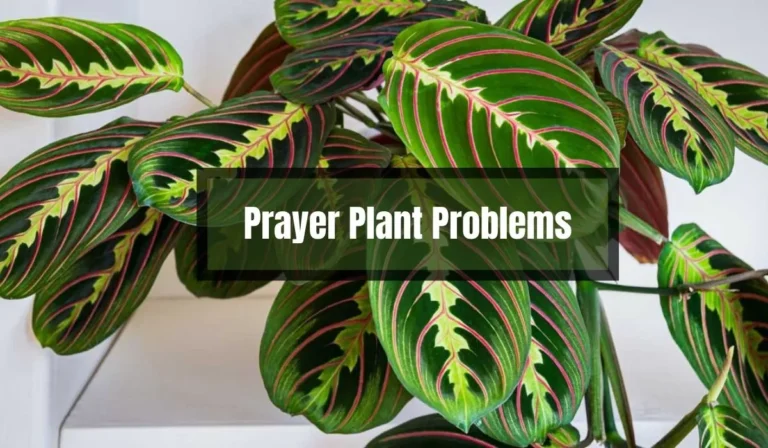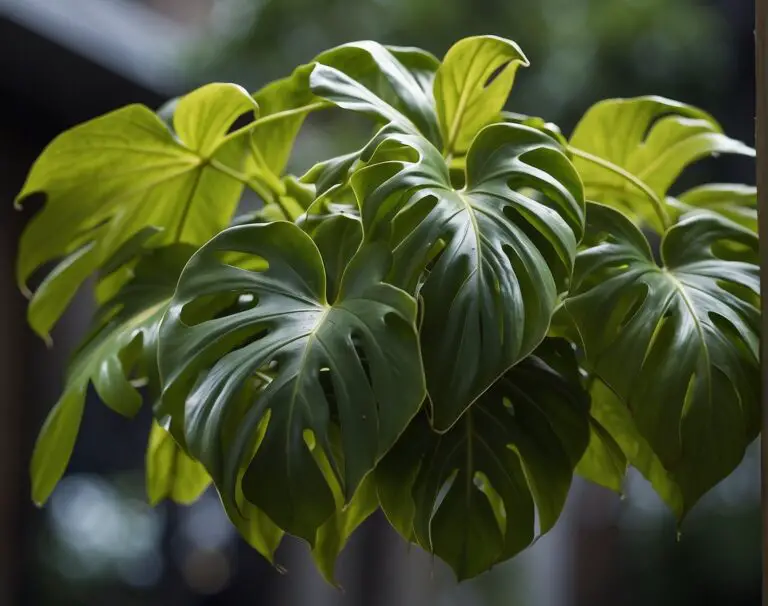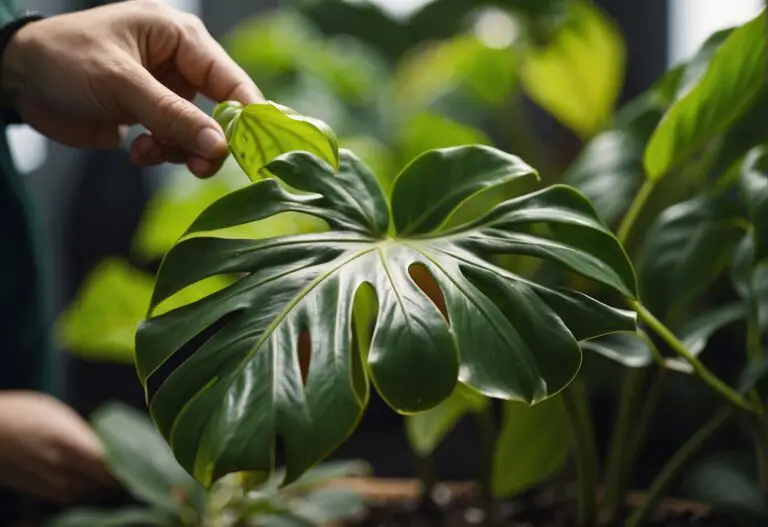Philodendron Rust Spots: Causes and Treatment
Philodendron plants are a popular choice for indoor gardening enthusiasts due to their low maintenance requirements and beautiful foliage. However, like any plant, they are susceptible to various issues that can impact their growth and health.
One of the most common problems that Philodendron owners face is rust spots on their leaves. These unsightly spots can be a sign of a more significant issue, but with proper care and attention, they can be treated and prevented.
If you notice rust spots on your Philodendron leaves, it is essential to understand the underlying causes of this issue. Rust spots are typically caused by fungal or bacterial infections, which can be the result of overwatering, poor air circulation, or high humidity levels. Additionally, pests like spider mites can also cause rust spots on Philodendron leaves. Understanding the causes of rust spots can help you take preventative measures to keep your Philodendron healthy and thriving.
Key Takeaways
- Rust spots on Philodendron leaves can be caused by fungal or bacterial infections, overwatering, poor air circulation, high humidity levels, or pests like spider mites.
- Preventative measures like proper watering, good air circulation, and regular cleaning can help keep your Philodendron healthy and prevent rust spots.
- Treatment strategies for rust spots on Philodendron leaves include removing infected leaves, using fungicides or pesticides, and adjusting environmental conditions to promote plant health.
Understanding Philodendron Rust Spots
Definition and Description
If you’ve noticed rust-colored spots on your philodendron’s leaves, you may be dealing with Philodendron Rust Spots. This fungal disease is caused by the pathogen Puccinia philodendrii, which attacks the leaves of the plant.
The rust spots can appear as small, raised bumps or larger, irregular patches on the leaves.
Causes of Rust Spots
Philodendron Rust Spots are caused by a fungus that thrives in warm, humid conditions. The fungus can spread quickly in damp environments, making it important to avoid overwatering your plant.
Additionally, the disease can be spread through contaminated soil, so it’s important to use sterile potting mix and clean your gardening tools regularly.
Symptoms and Diagnosis
The first sign of Philodendron Rust Spots is small, yellow spots on the leaves of the plant. Over time, these spots will turn into rust-colored bumps or patches. If left untreated, the disease can cause the leaves to yellow and fall off the plant.
To diagnose Philodendron Rust Spots, inspect your plant’s leaves for the characteristic rust-colored spots. Additionally, look for signs of other fungal diseases, such as powdery mildew or black spot. If you’re unsure of the cause of your plant’s symptoms, consult a gardening expert or take a sample of the affected leaves to your local nursery for diagnosis.
Remember to keep your philodendron in a well-ventilated area with moderate humidity, avoid overwatering, and use sterile potting mix to prevent the spread of Philodendron Rust Spots.
Preventative Measures
To prevent rust spots on your Philodendron leaves, there are a few preventative measures you can take. Proper watering techniques, ideal lighting conditions, and appropriate humidity levels are all important factors to consider.
Proper Watering Techniques
Overwatering your Philodendron can cause root rot and lead to rust spots on the leaves. To prevent overwatering, make sure the soil is dry before watering again.
You can also use a moisture meter to determine when it’s time to water. When watering, make sure to water thoroughly and allow excess water to drain out of the bottom of the pot.
Ideal Lighting Conditions
Philodendrons thrive in medium to low light conditions. Direct sunlight can cause the leaves to burn and develop rust spots. Place your Philodendron in a spot with bright, indirect light for best results. If you notice your plant is not getting enough light, consider using an artificial grow light.
Appropriate Humidity Levels
Philodendrons prefer high humidity levels, but too much humidity can lead to fungal growth and rust spots on the leaves. To maintain appropriate humidity levels, you can use a humidifier or place a tray of water near the plant.
Misting the leaves can also help increase humidity levels. However, make sure not to mist too often as it can lead to fungal growth.
Remember, prevention is key when it comes to rust spots on your Philodendron leaves. By following these preventative measures, you can keep your plant healthy and rust-free.
Treatment Strategies
If you have noticed rust spots on your Philodendron, don’t worry, there are several treatment strategies you can use to help your plant recover.
In this section, we will discuss three effective methods: Chemical Treatments, Natural Remedies, and Pruning Affected Areas.
Chemical Treatments
There are several chemical treatments available in the market that can help you get rid of rust fungus on your Philodendron. Fungicides containing copper or sulfur are effective against rust fungus.
However, it is important to read the instructions carefully before applying them to your plant. Overuse of chemicals can harm your plant and the environment.
Natural Remedies
If you prefer a more natural approach, there are several home remedies that can help you get rid of rust fungus. One of the most effective remedies is a mixture of baking soda and water.
Mix one tablespoon of baking soda with one liter of water and spray it on the affected areas of your plant. You can also use neem oil, which is a natural fungicide. Dilute the neem oil with water and spray it on your plant.
Pruning Affected Areas
If the rust fungus has spread to a large part of your plant, it may be necessary to prune the affected areas. Use clean, sharp scissors to cut off the infected leaves and stems.
Be sure to dispose of the infected plant parts in a sealed bag to prevent the spread of the disease. After pruning, make sure to clean your scissors with rubbing alcohol to prevent the spread of the disease to other plants.
Remember, prevention is always better than cure. Make sure to provide your Philodendron with the right growing conditions, including proper watering, adequate sunlight, and good air circulation. Regularly inspect your plant for signs of rust fungus and take action immediately if you notice any symptoms. With the right treatment strategies, you can help your Philodendron recover and thrive.
Ongoing Care and Maintenance
Regular Monitoring
Regular monitoring is essential to keep your Philodendron healthy and free from rust spots. Check your plant regularly for any signs of rust spots or other diseases.
If you notice any brown spots or discoloration on the leaves, take immediate action to prevent the spread of the disease. Remove any infected leaves and prune any infected branches.
Soil Management
Proper soil management is crucial for the health of your Philodendron. Make sure the soil is well-draining and does not retain water for too long. Overwatering can lead to root rot and other diseases, including rust spots.
Check the soil moisture level regularly and water only when the top inch of soil is dry to the touch.
Fertilization and Nutrition
Fertilization and proper nutrition are essential for the growth and health of your Philodendron. Use a balanced fertilizer that contains equal amounts of nitrogen, phosphorus, and potassium.
Fertilize your plant every two to three months during the growing season. Avoid over-fertilizing, as this can lead to a build-up of salts in the soil, which can cause brown spots on the leaves.
Remember to follow these simple care and maintenance tips to keep your Philodendron healthy and free from rust spots. Regular monitoring, proper soil management, and fertilization are essential for the health and well-being of your plant.
Expert Tips for Healthy Philodendrons
To keep your Philodendrons healthy and free from rust spots, here are some expert tips that you can follow:
1. Provide Proper Lighting
Philodendrons prefer bright, indirect light. Direct sunlight can burn their leaves, while too little light can cause stunted growth. Place your Philodendron near a window that receives bright, indirect light, or use artificial grow lights to supplement natural light.
2. Water Correctly
Overwatering can lead to root rot and other diseases, while underwatering can cause the leaves to wilt and turn yellow. Water your Philodendron when the top inch of soil feels dry to the touch.
Make sure to use well-draining soil and a pot with drainage holes to prevent water from accumulating in the roots.
3. Maintain Proper Humidity
Philodendrons thrive in humid environments, so it’s important to maintain a humidity level of at least 50%. You can increase humidity by misting the leaves with water, placing a tray of water near the plant, or using a humidifier.
4. Fertilize Regularly
Philodendrons are heavy feeders and require regular fertilization to thrive. Use a balanced fertilizer with equal parts nitrogen, phosphorus, and potassium, and apply it every two weeks during the growing season.
By following these expert tips, you can ensure that your Philodendrons remain healthy and free from rust spots. Remember to monitor your plant regularly and address any issues promptly to prevent them from spreading.
Frequently Asked Questions
How can I treat rust spots on my Philodendron leaves?
Rust spots on Philodendron leaves are caused by fungal infections. To treat them, you should remove the infected leaves and dispose of them properly.
You can also use a fungicide to help prevent the spread of the disease. Be sure to follow the instructions on the fungicide carefully and reapply as needed.
What causes brown spots to appear on Philodendron stems?
Brown spots on Philodendron stems can be caused by a variety of factors, including overwatering, poor soil drainage, and insect infestations. To prevent brown spots, be sure to water your Philodendron only when the top inch of soil is dry, use well-draining soil, and regularly inspect your plant for signs of pests.
Why are there orange spots on my Philodendron, and how can I fix it?
Orange spots on Philodendron leaves are a sign of rust disease. To fix it, you should remove the infected leaves and dispose of them properly. You can also use a fungicide to help prevent the spread of the disease. Be sure to follow the instructions on the fungicide carefully and reapply as needed.
What does a fungal infection look like on a Philodendron plant?
A fungal infection on a Philodendron plant can appear as brown or black spots on the leaves, stems, or flowers. The spots may be round or irregular in shape and may have a fuzzy or powdery appearance. In severe cases, the leaves may turn yellow or brown and fall off the plant.
How can I identify and manage fungal leaf spot disease in Philodendrons?
Fungal leaf spot disease in Philodendrons can be identified by the presence of brown or black spots on the leaves. To manage the disease, you should remove the infected leaves and dispose of them properly.
You can also use a fungicide to help prevent the spread of the disease. Be sure to follow the instructions on the fungicide carefully and reapply as needed.
What are the best practices for preventing rust and brown spots on Philodendron plants?
To prevent rust and brown spots on Philodendron plants, you should water your plant only when the top inch of soil is dry, use well-draining soil, and avoid over-fertilizing your plant. You should also regularly inspect your plant for signs of pests and disease and remove any infected leaves immediately.






